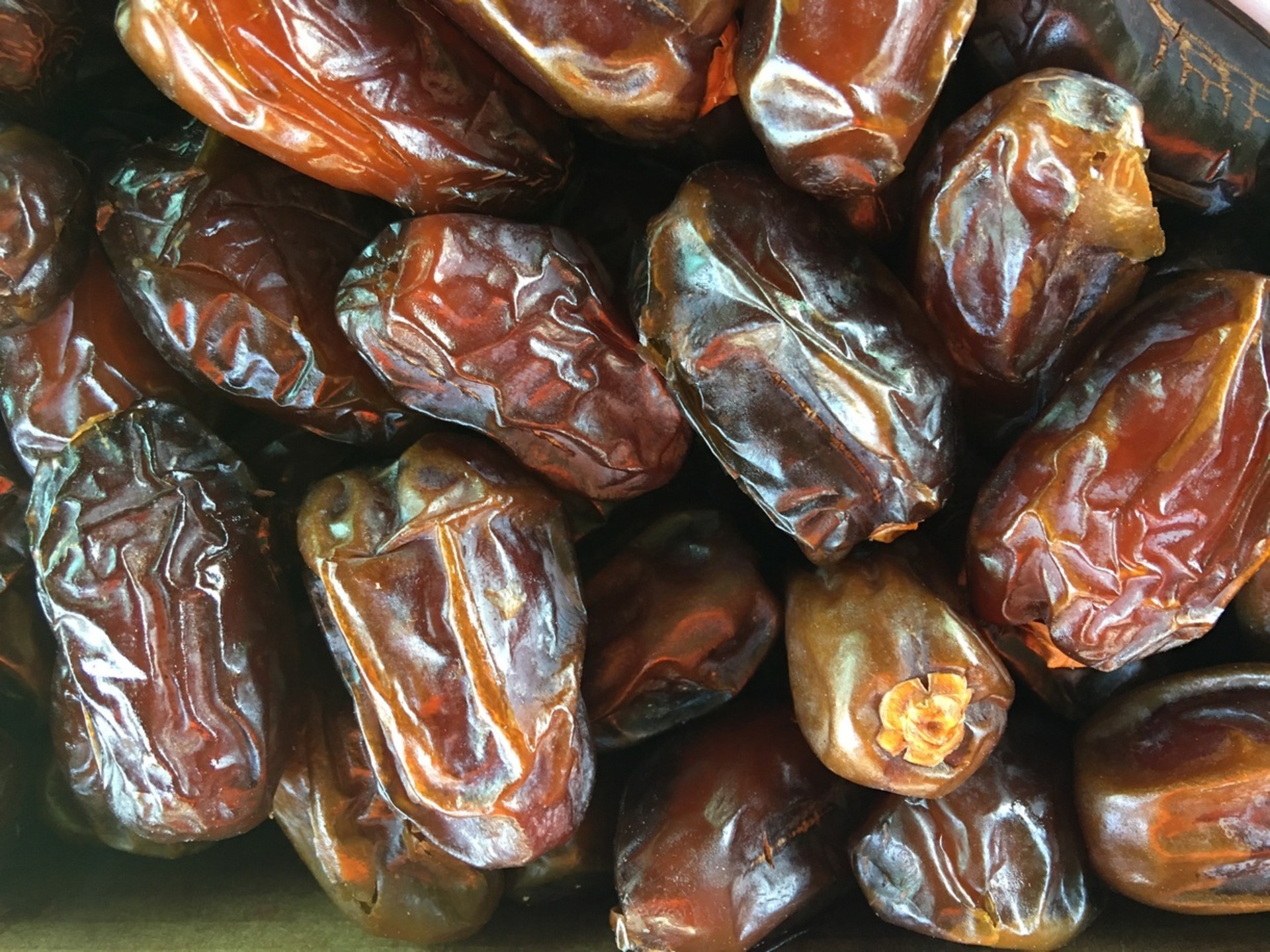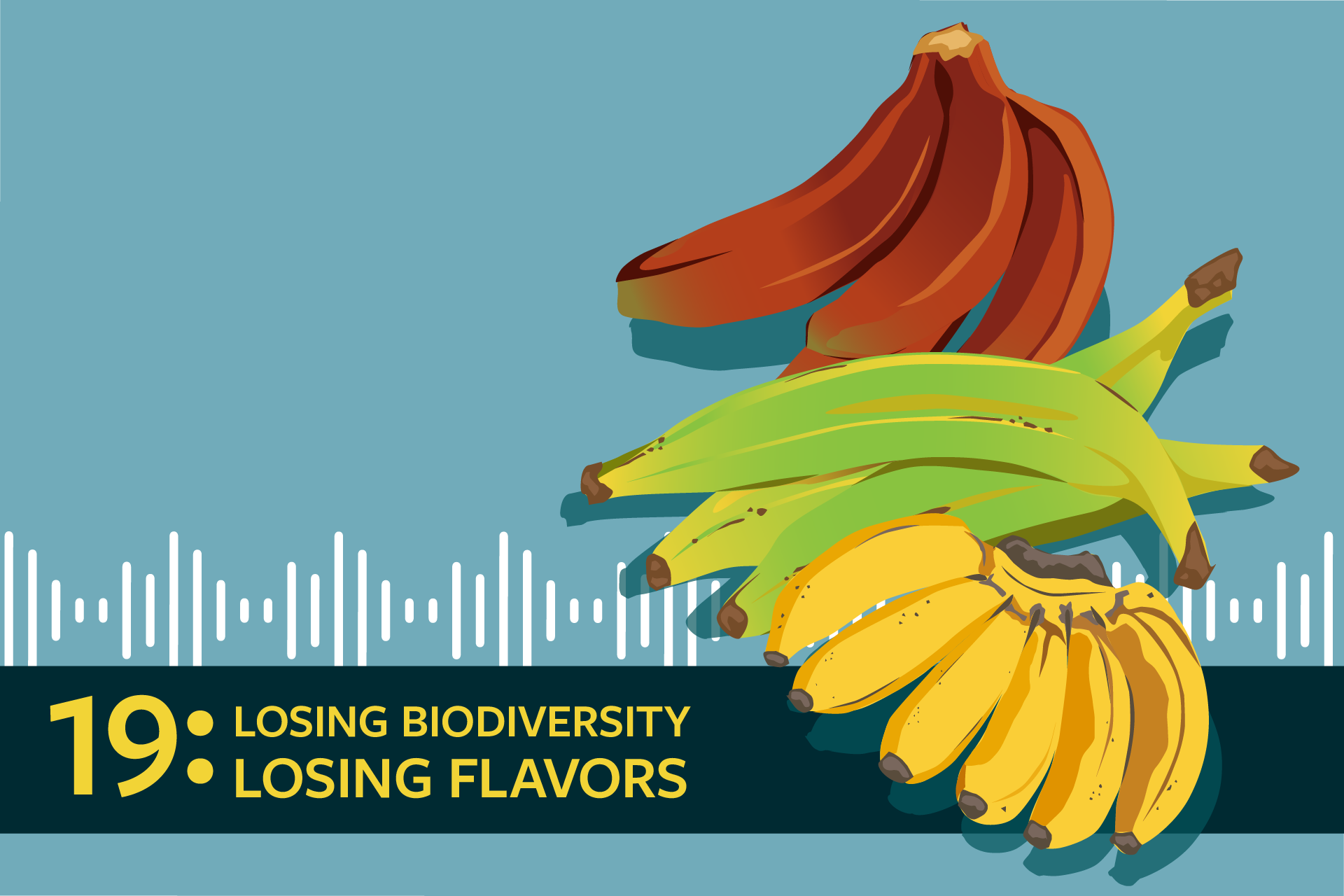Preserving heirloom date varieties in the Coachella Valley
In the summer of 2024, Joan Smith had a problem. The licensed CPA turned date farmer, who grows 30 heirloom varieties as well as organic Medjools, a staple crop, on her 8-acre farm in California’s Coachella Valley, ran out of dates to sell. She wasn’t alone: Several other organic farmers in the region had the same issue — they didn’t have enough to supply to customers, she says. A good problem to have, although for smaller farms it’s not so simple to increase production from one year to the next. Date palms take time to grow and bear fruit. Smith planted the first trees on her farm, Rancho Meladuco, in 2015, when she was still running her accounting business and working on the farm on the side; she now has seven full-time employees and also works full-time on her date farm and business, she says, “seven days a week, no break.”
Date palms, native to the Middle East and Northern Africa, thrive in arid to semi-arid and hot climates with long summers and low humidity. They were brought to the United States in the late 1800s and early 1900s when the Department of Agriculture sponsored missions for men to find new crops to cultivate in America. In the U.S., they are cultivated in central and southern Arizona, including Phoenix and Yuma County, and in Southern California, in the Imperial Valley and the Coachella Valley.
For many years, after an initial heyday in the first half of the 20th century, the U.S. date market just trudged along. Then, dates started trending, an uptick in demand that Smith attributes to health-conscious social media influencers. Dates are packed with fiber and antioxidants, along with potassium, magnesium and other minerals; they also rank low on the glycemic index. The influencers were pushing them as unprocessed, nutrient-dense alternative sweeteners, binders and snacks — one of which went viral. “[Dates] totally hit the mark as a healthy Snickers,” Smith explains, “which is essentially caramel, peanut butter, peanuts and chocolate. We like to use the dates as a substitute for the caramel.” Social media has helped push dates into the spotlight, she says, but there is still more marketing and promotion to do: “For as popular as they are, it’s still not as mainstream as a banana … I’m inspired to continue to make dates fun and interesting and to continue to drive discovery.”
Three years ago, she pitched Walmart in an open call and was selected for her Grinders dates — essentially, imperfect Medjools that would otherwise be discarded — and encouraged the big-box giant to put dates front and center in the aisles. “We went from bottom shelf to the third from bottom” in that time, she says, describing their position in the dried fruits section. Joolies, another brand focused on bringing dates into the limelight with clever formats and bright turquoise packaging, sells dates and assorted flavors of energy bites; they’re also produced by a Coachella Valley-based family farm, La Quinta Date Growers.
Collectively, these efforts have pushed the date in the U.S. from a niche product into the mainstream. In 2024, the United States grew approximately 62,450 tons of dates, mostly of the commercial Deglet Noor and Medjool cultivars, valued at around $279 million, according to USDA statistics. That’s a dramatic expansion of the industry, which produced just 29,000 tons nationwide in 2014. As the fruit’s growing popularity pushes prices ever-higher (with growers earning 38 percent more for the fruit in 2024 than they did even two years earlier), groves have expanded significantly across Southern California and Arizona.
What makes heirloom dates unique?
All dates are categorized as drupes — fruits with a single pit or seed, such as olives or apricots. They vary in size, from small to large; color, from amber to dark brown; shape, from round to oblong; and texture, from plump and juicy to wrinkled and chewy (some are even dry). “The U.S. date industry predominantly focuses on Medjool and Deglet Noor varieties and most of the larger ranches grow none of the other varieties anymore,” says Smith. Heirloom varieties, which Smith describes as those “once grown, farmed or raised more prevalently in earlier times,” contribute to biodiversity and different flavor profiles.
Many large-scale date farmers don’t grow heirloom dates because there are too many uncontrollable variables that require more care, time and effort compared to growing commercialized date varieties. As Smith explains, some of these variables “can be lower yields; smaller-sized fruit; unremarkable flavor; propensity for crop-related issues like mold, skin checking, rot; or lack of suitability for the local climate.” In a nutshell, heirloom varieties don’t fit into the commercialized agriculture market because there are too many risks involved and they aren’t a guaranteed crop that can net a large sum. As dates become more commercialized, heirloom date varieties — like all heirlooms — are at risk of disappearing.
The value of living collections
Saving heirloom date varieties isn’t as simple as just planting their seeds. “Seeds from any variety of date palm will never grow the same type of palm,” explains Smith. This means Medjool seeds won’t grow Medjool palms. Date palms have to be grown from offshoots, or pups, to create the same variety. So while date seeds might be viable for centuries (scientists have germinated date seeds that were at least 2,000 years old), specific varieties can disappear if the last living plant dies without someone growing its offshoots. That means that heirloom varieties have to be preserved in living collections on farms or in gardens.
But even if most date palms are grown by offshoots, seeds still have a role to play when it comes to developing new varieties. “Seeds don’t grow true to the variety from which they come, so seeds from one of these varieties aren’t going to produce another tree of the same variety — it will be something totally different and new,” says Smith. “Each seed germinated will be a completely genetically unique variant.”
Date palms have to be grown from offshoots, or pups, to create the same variety. So while date seeds might be viable for centuries ... specific varieties can disappear if the last living plant dies without someone growing its offshoots.
And not every date palm will produce fruit. Date palms are dioecious, meaning they need both male and female plants for fruit production. “The males produce flowers with pollen and the female flowers that yield fruit must be pollinated by the male pollen to develop,” says Smith. “Approximately 75 to 80 percent of palms grown from seed will be a male palm that bears no fruit.” Growers usually don’t want to dedicate that much space and water to plants that won’t fruit, but having relatively few male palms producing pollen means that natural pollination in date groves isn’t very efficient. As a result, date palms are a demanding crop; they require a palmero, a person specialized in hand-pollinating the flowers for the fruit to grow, she says. While a few other fruit crops are sometimes hand-pollinated to boost natural yields, the level of work date palms need to crop well puts them on par with vanilla, which comes from an almost exclusively hand-pollinated orchid.
Small family farms preserving date varieties
It wasn’t that long ago that the Coachella Valley farmers were growing an array of date varieties. “Seventy-five years ago, most of the local date farms were growing an assortment of other varieties for their mail order and date stand traffic,” says Smith. “Today, Shields is the last ‘date shop’ standing in the Coachella Valley still offering a large assortment.”
Coachella Valley date farmers grow a mix of American and Middle Eastern varieties. “The better-known Middle Eastern varieties like Halawy and Khadrawy, and American hybrids — another name for seedlings grown and propagated by early American date farmers — like Honey or Blonde are the most commonly encountered outside of Medjool, Deglet or Barhi,” she says. Unfortunately, some of the American hybrids are no longer grown.
Luckily, several smaller-scale farms see the value in preserving dates and continue to grow them in the Coachella Valley. “It’s mostly the smaller family farms still growing heirloom varieties,” explains Smith. “These include Sam Cobb Farms, Anderson Dates, Bautista Farms, China Ranch, Sphinx Dates, Leja Farms and Pato’s Date Gardens.” For her part, Smith offers a box of “rare and unusual dates” — both organic and nonorganic heirloom varieties — online.
From date seed to mature tree
Nurturing a date palm from seed to fruit-bearing to mature tree is a long-term time investment. Smith unpacks the timeline, explaining that it takes a single seed seven to eight years to produce a date bunch and bear fruit. But that’s just the start: From there, if the farmer deems the fruit worthy, they’ll leave the palm to grow for several more years, then cut and transplant some of the handful of offshoots around its base. Each offshoot can produce two to seven more offshoots, which can be grown and transplanted a few years after that. “This is how an entire grove of a single variety is cultivated, and takes decades of offshoot management to reach large numbers of trees,” she explains. On her farm, one acre grows 62 palms and would take 20 years to grow all the trees from seed.
It’s an incredible amount of time and effort to grow new varieties. Yet in the early 1900s, many American date farmers dedicated their lives to cultivating them. One of those lifelong date farmers was Art Futterman, who cultivated new varieties for 40 years. Smith purchased some of his offshoots to keep his varieties alive before he died and his farm was sold.
There’s increased urgency to save identifiable date trees as older date farmers (like Futterman) retire or pass away and the next generation turns away from date farming. And some families have sold their date farms to commercial farmers, who aren’t interested in preserving heirloom trees. Smith stays driven to collect and cultivate unique date palms despite the challenges and complexities. Her motivation is twofold: not only to preserve American varieties that could be lost, but also to preserve a piece of California date history.
Get the latest food news from FoodPrint.
By subscribing to communications from FoodPrint, you are agreeing to receive emails from us. We promise not to email you too often or sell your information.
Top photo by The Desert Photo/Adobe Stock.
More Reading
How urban orchards improve a community's access to fresh, healthy food
October 30, 2025
The meat industry smeared the Planetary Health Diet. Now its creators are back with more evidence.
October 10, 2025
From Ludacrisp to Cosmic Crisp: How new apples are bred
October 8, 2025
Can recycled soil blends support a more sustainable future?
September 5, 2025
This fall, get involved in one of these campus sustainability initiatives
August 26, 2025
A new book says tech-supported industrial ag will feed the world. Agroecologists would like a word.
July 9, 2025
Use a grocery store trip to teach kids environmental stewardship
July 7, 2025
Can rye growers get consumers and retailers excited about rye?
May 19, 2025
Can private grants fill regenerative agriculture's federal funding gap?
May 1, 2025


